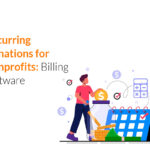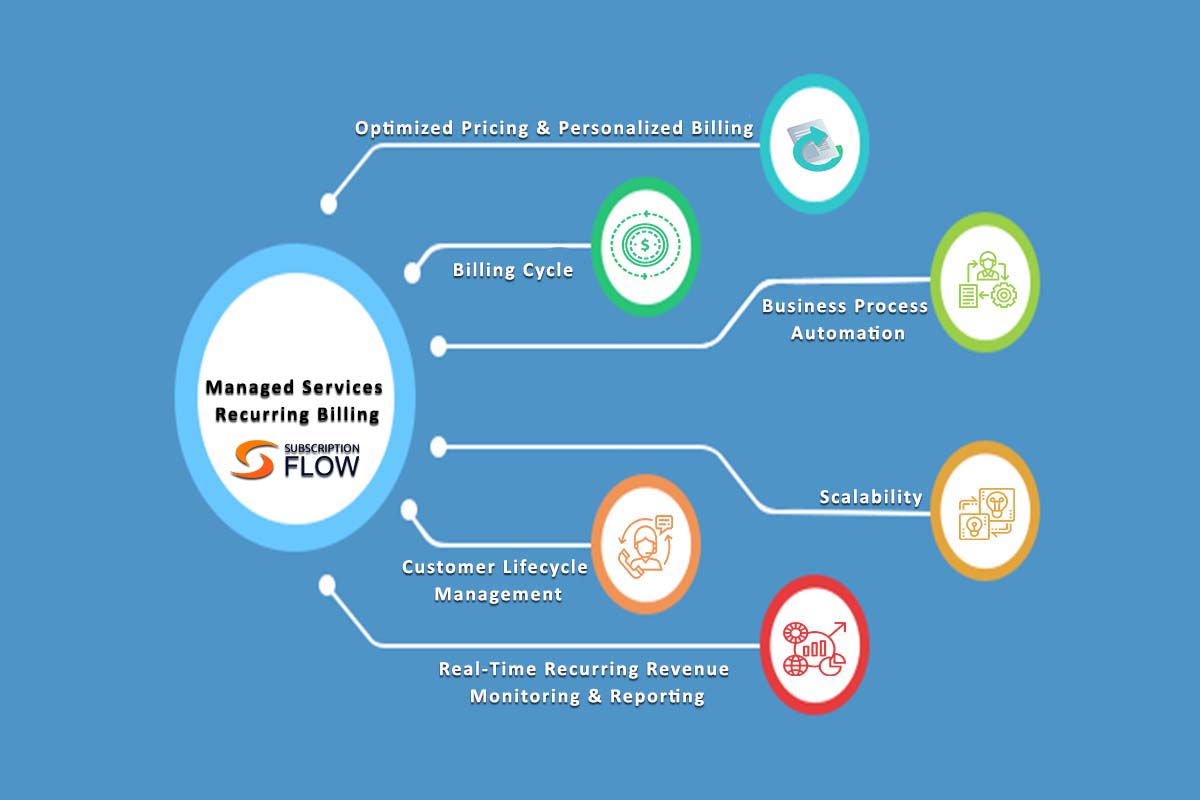
Recurring Billing Amid COVID-19 Is Changing the Ways We Earn and We Pay…
With the outbreak of the corona virus, the global economy has suffered through the most severe downturn of modern history after the recession disaster of 2007. From the United States to North Korea, no country or no economy is there that had not seen the disruptive lives, the collapse of commerce, and stagnation of the economy.
Impact of COVID-19 On an individual’s Living, Earning, and Spending
The quick and damaging effects of COVID-19 worldwide spread unsettled the business operations, unbalanced the market demands, and mounted pressures on supply chains from across the ways.
Researchers suggest that the protracted duration and stark impact of the pandemic may lead to the global economy contraction up to 3.7 percent that would incur a loss of more than 12.8 trillion only in the US.
Except for a few, most businesses have suffered, and still, have been suffering from the sudden damages. Many small to mid-sized businesses, even, larger enterprises had to either shut their multiple units, downsize the teams, lay off low-pay staffers, or slash salaries to a great percentage.
In the times when people were losing their jobs or experiencing pay cuts, there were no reasons to splurge. More and more individuals were looking for opportunities that would allow them to manage their everyday expenses for essential needs.
This underscores the fragility of the capability of an individual to afford things for everyday needs.
It also shows how COVID-19 severely upset the purchasing behaviors of consumers and the aftershocks are continued to afraid of the common man.
Studies and surveys suggest more four times people are paying for one or more subscriptions than the number of people who were paying in pre-COVID-19 times.
The businesses that provide them the assistance as subscriptions are booming. Subscription Merchandises, SaaS, rentals, and other lease companies throughout North America, Europe, and the Asia Pacific have seen an increase in sales on a recurring basis by more than 300 percent.
Also Read: COVID-19 ALERT—ACH Payment Fraud Can Leave You Empty-handed and Your Bank Account EMPTY!
Ownership Does Not Attract People Anymore…
People are more concerned to not only fulfill their needs but their wants too without causing damages to their pockets.
Rentals, lease, or products and services available on a recurring basis attracted them more during this period than ever. Along with pandemic, the advancement of the technology also causes new generations of buyers to approach the products or services available on a recurring basis so that they may quickly update themselves or switch to the latest technology without losing the temperament to the uselessness of the products or services they own.
The drastic changes in the approaches and behaviors of consumers gave rise to the new recurring billing trends and attract merchants and vendors from across the industries and sectors to incorporate the revenue model and continue their survival in the post-COVID-19 era.
Today, people are less concerned about possessions. They are comfortable because the subscription to products and services relieves them from the burden of paying hefty amounts, often upfront and one-time, against the burdening ownership that also incurs clutter, cost of maintenance, and despite a decline in the value of the possession.
Insights Into the Recurring Billing and Subscription Market Statistics After COVID-19
These are some of the quick insight that shows the emergence of the subscription economy as the future of the global economy:
- A comparative study for 2019 and 2020 revealed:
- 35% increase in online shopping
- 25% increase in buying groceries online
- 42% decrease in brick-and-mortar purchasing
- Payment volumes more than doubled since 2000 with a record USD174 billion payments
- The recent growth of the different recurring transaction types and the anticipated surge of the internet of things (IoT) payments is driving payment stakeholders including issuers, acquirers, networks, and independent software vendors (ISVs) to improve the way recurring transactions are managed.
- Recurring transactions processed on debit and credit cards in the United States are expected to reach $473 billion by 2021.
- The subscription growth trends across the sectors are:
- Accelerating: OTT Video Streaming, Digital News & Media, E-Learning, Communications Software
- Limited: B2B & B2C Software, Information Services
- Slowing: Consumer IoT, Business IoT Services, Software for Small Businesses, Memberships
- Contracting: Travel & Hospitality, Sports Related Services
Subscription Commerce Is Reshaping the Post COVID-19 Landscape of the Global Economy
Businesses offering recurring billing have been serving the people for quite a long, but with the evolution of cloud computing, artificial intelligence, SaaS, and the Internet of Things, the subscription business model has also been evolved into full-fledged subscription commerce aka SubCom.
Over the past seven years, the subscription market has 700 times grown and the rate of growth doubled up after the outbreak of the corona virus across the globe.
Today, the subscription economy includes businesses and industries from across the sectors. Some of the most common and most prominent are:
IT
In the IT industry, cloud computing pay-as-you-go, SaaS subscriptions, IoT subscription, data centers subscription, and others are the primary examples of subscription commerce.
Education
The education sector since ever was based on the recurring billing model. The Internet further paved the way for borderless reach to the education and information digital libraries and other resources against a monthly or yearly fee.
After the COVID, education from primary to higher has now switched to online and further make avenues for subscription-based businesses with online education, language learning, short courses, distance-learning, technical learning, hobby learning, coaching and tuitions, and many many more.
Health and Personal Care
Health has seen drastic evolution as the recurring billing sector. The inception of telemedicine and Telehealth is not a new concept, but it is only the pandemic that unveiled its necessity in the age where the healthcare sector needs to shed off the burden from their shoulders.
Telehealth and telemedicine allow easy, simple, and above all cheaper access to the healthcare services and medicines with the subscription plans and paying through recurring billing means.
Likewise, personal care subscriptions have also gained popularity in this
eCommerce
In its modern history, it is the eCommerce that actually laid the foundation for the subscription businesses with online merchandise, retail, and trade.
After the COVID-19, another form of subscription business has also swept the market as subscription box businesses that made physical articles available on a recurring basis and at their doorstep. The items in the subscription boxes are assorted, cheaper, and interesting.
No article cannot be accommodated in the mighty subscription boxes. Not only this, Subscription boxes can be customized for anyone. Yes, you read it right… for anyone. Men, Women, Teens, Young adults, Toddlers, Newborns, Old grannies, differently-abled, or even for your pets and plants, too.
OTT, Digital Media, and Publishing
Long before the COVID-19, online media, streaming, gaming, and private content services were already successful, but after the COVID-19, the OTT, digital media and publishing, gaming, and other online content publishing sites have seen unprecedented growth in their subscription businesses.
People were at home and they contributed a whopping 110% growth and billions of dollars as recurring revenue in March through May 2020 compared to the previous 12 months due to increased consumer interest in news and all sorts of digital content.
Print, Publications, and Broadcast
Though COVID-19 hugely impacted the print and publications, however, the stronger houses due to their strong content managed to survive only because of their strengthened subscription model. Broadcast and print, both types of media houses introduced freshly-brewed content for their customers through their digital platforms in addition to their regular content in high-quality subscriptions.
Niche-specific digital Newspapers and digital magazines such as sports, entertainment, commerce, finance, SaaS, fashion, insurance, education, health, and other professional digital publication subscriptions were on the rise, too as the comprehensive sources of latest news and views on the current situations.
Power Sector and Telecom
Power sectors and telecom sectors since ever were based on the recurring billing and most specifically pay-as-you-go billing model. These recurring models after the COVID-19 evolved into proper subscriptions and increased the contribution of the recurring revenue in the profit streaming.
Automobiles and Transportation
After COVID-19, the automobile sector that had seen the most disruptive fluctuation in their businesses. It made them realized the significance of the subscription business and the need for the hour fetched them to the subscription commerce economy. Bigwigs are all set to leap into the subscription market.
Car rentals and car lease are also types of recurring billing but their business models were as such do not support the subscription billing. After the first wave of the pandemic, the local as well as private transport and mass transit systems across the world have also explored the opportunities with the recurring billing in different other forms.
Procurement, Logistics, and Shipping
Procurement, logistics, shipping, and delivery services companies are the backbones for many businesses in supporting and strengthening their communications, relations, and revenue.
After the pandemic, a major shift in the business model of these companies has been observed that effectively is stretching the lifecycle of the customers by providing them access to the personalized services as a subscription for a prolonged period. Subsequently, subscriptions allow them to gain customer loyalty and recurring revenue for a definite period.
Consulting, Counselling, and Other Services
Services have always been the sector that is so confused with their billing model. Before COVID-19, consulting, counseling, advisory, and other services were considering the subscription model, but pandemic onset made them fully adapt as the demands for online consultation in every sector surged.
Travelling, Boarding, and Lodging
It is the most affected sector during COVID-19. Travelling, boarding, and lodging economy have everywhere seen a severe downfall. It attracted the hotels, clubs, restaurants, resorts, airlines, cab services, and all the tourism and traveling sector to find ways for recurring revenue that help them to survive in bad days as well as make it convenient for more and more tourists to travel more frequently.











